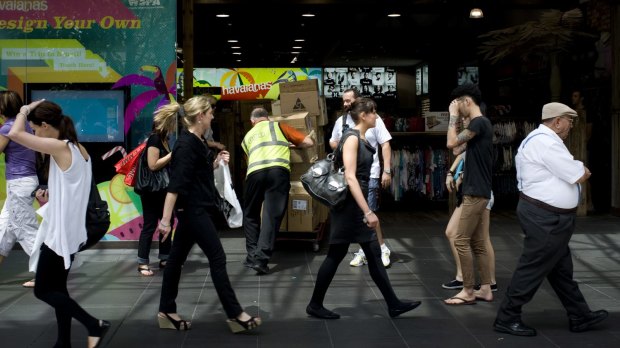This was published 6 years ago
Opinion
It's time to work on a rethink of the 38-hour week
By Melissa Coburn

Illustration: Joe Benke
The court that in 1947 determined to reduce weekly working hours in Australia from 44 to 40 understood that working hours are not set in stone, but must change with the times.
The Commonwealth Arbitration Court noted in its 1947 decision that 100 years prior in England a 10-hour day or a 60-hour week was enacted, that in Australia 90 years earlier an eight-hour day or 48-hour week was achieved in limited cases, and that 20 years earlier the same court had awarded a 44-hour week. The court concluded that there was "no reason to assume that the capacity of industry has ended at 44 hours".
In 2018 there is also no reason to assume that in Australia a reduction in hours in the working week has reached its limit at 38 hours. In France a 35-hour week has been implemented since 2000 for companies with more than 20 employees and since 2002 for companies with 20 employees or less. Hours in excess of 35 hours are considered to be overtime.
In Sweden a trial of a six-hour working day was conducted over 23 months at Svartedalen’s elderly care facility in Gothenburg. The trial suggested that staff working reduced hours were happier, healthier, more productive, took less sick leave and provided a higher level of care for their patients than those working an eight-hour day.
On the other hand, the expense of engaging additional staff to cover the remaining hours not worked by those working a six-hour day, was seen as unsustainable. Others have argued that had the trial continued for a longer period the cost of engaging additional staff may have been balanced by savings in the costs related to sick leave. The international experiences may inform options that could be considered in Australia.

Would working less make us more productive?Credit: Josh Robenstone
The court of 1947 could not have imagined the world of 2018, of net-banking reducing the need for bank tellers, of self-serve supermarkets reducing the need for cashiers. Nonetheless it correctly read the potential for technology to create vast changes. The court reduced weekly working hours even though many goods were in high demand and short supply in the years following the conclusion of World War II and even though the economy was in a state of disorganisation due to the transition from war to peace.
In 2018 and with the Senate last October establishing a Select Committee to inquire into and report by June 21, 2018 on the future of work and workers in Australia and the impact of technological and other changes, it may be time again to adopt some of the courage shown by that long ago court of 1947 in reviewing the average weekly hours of workers. Relevant to any review of workers’ hours should be a reimagining of the worker as much more than his or her economic output.
How do we create a working life model that is fully productive, promotes health, reduces obesity and encourages activity? How do we reduce the pressures on parents running from work to pick up their children from school and aftercare? Child expert Steve Biddulph has written recently that the way we live in the new century is harming our basic humanity with adults stretched beyond belief, working long hours “without respite for parenthood” and setting us at odds with those we love the most, and who need our time, security and affection.

School holidays and work holidays don't match up.Credit: The Age
How do we reconcile the 12 weeks of holidays that children seem to get with the four-week standard generally available to their parents? How has the gap between workers’ and children’s holidays been allowed to continue for so long without adequate measures available to reduce the stresses it places on families and workers? It has created situations in which children are enrolled in sports clinics by way of childcare or where parents must call in favours from friends or tag-team as solo parents.
Research suggests that a happy, fulfilling life is achieved by having close and supportive relationships, a sense of purpose in life and financial security. What work model would facilitate the realisation of such a life? Would, for example, working a four-day week encourage efficiency in the workplace and allow more time for self, and wellbeing?
The march of the machines is inexorable; technology is not restrained even when it is clear its implementation will make the positions of many workers redundant. Workers need to be equally determined in pursuing working lives that suit them. Faithfully sticking to a five day, 38-hour working week, while machines replace workers around them and disruptive innovation in business becomes more common, seems foolhardy.
In 1983 the Australian Conciliation and Arbitration Commission determined that a 38-hour week could be implemented by agreement or if unopposed, providing that any cost resulting from the change could be reduced through changes in work practices.
In 1986, the National Wage Case determined that the 38-hour week could be implemented even if there was opposition. In 2009 under the Fair Work Act it was made unlawful for an employer to request or require a full-time employee to work more than 38 hours in a week, unless the additional hours were reasonable, this law constituting one of the 10 National Employment Standards applying to all employees covered by the national workplace relations system.
It has therefore been almost 35 years since the 38-hour working week began to be implemented. Vast changes in technology have occurred since that time. Surely we can do better for our workers. It is time to move again.
Melissa Coburn is a Fairfax contributor.